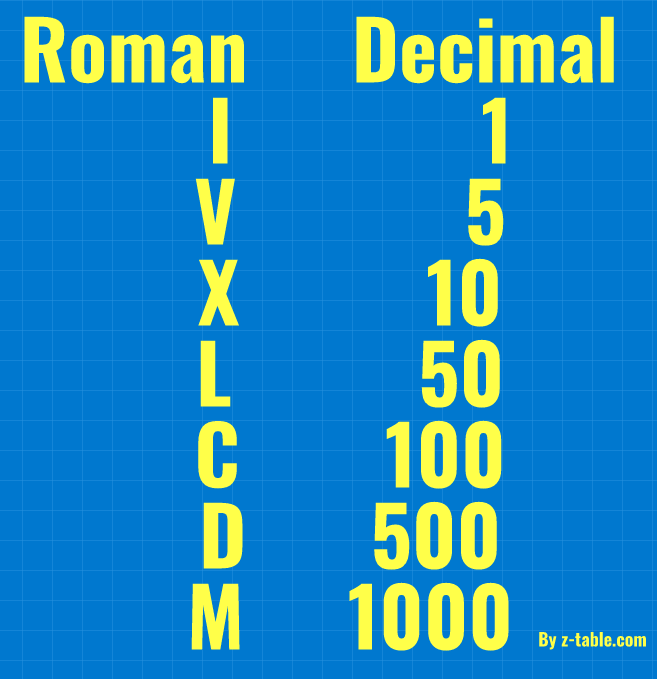10 in Roman Numerals
The number 10 is foundational in many mathematical and numeral systems, given its role as the base of the decimal system that is so prevalent across cultures and applications. In Roman numerals, this fundamental number is succinctly captured by the single character: X.
Sometimes conversion of Roman Numerals can be a daunting task, especially for larger numbers. You can always use a Roman numerals converter if you need to quickly convert Roman numerals to decimal numbers .
Sometimes conversion of Roman Numerals can be a daunting task, especially for larger numbers. You can always use a Roman numerals converter if you need to quickly convert Roman numerals to decimal numbers .
The Essence of the Number 10
As a keystone of the decimal system, 10 serves as the launching pad for understanding larger numbers and introduces the concept of place value in many numeral systems. The Roman system, though distinct in its approach, duly acknowledges the importance of 10 with a designated character.
| Roman Numeral | Value |
|---|---|
| I | 1 |
| V | 5 |
| X | 10 |
| L | 50 |
| C | 100 |
| D | 500 |
| M | 1000 |
Representation of 10 as X
In the Roman numeral system, the number 10 is represented by the symbol X. This notation stands distinct, without the need for combination or iteration of other symbols, emphasizing its foundational nature in the numeral hierarchy.
Defining Characteristics of Number 10 and X
- Unique Symbol: Unlike numbers that require a combination of symbols in Roman numerals, 10 is denoted with just X, reflecting its primary significance.
- Positioning: In the Roman numeral sequence, X comes after IX (9) and before XI (11).
Adjacent Numerals to 10
Understanding the place of 10 in the Roman numeral sequence can be achieved by observing the numbers immediately before and after it:
- IX represents 9.
- X denotes 10.
- XI stands for 11.
Insights into the Arabic Numeral 10
- The number 10 is a composite number and serves as the base of the decimal system.
- In Roman numerals, 10's solo representation as X underscores its pivotal position.
- Historically and culturally, 10 has been used as a benchmark in various contexts, from top 10 lists to the concept of giving a score of "10 out of 10".
Example Scenarios with 10 and X
- Addition: If you combine 10 (X) with 5 (V), the result is 15, represented as XV in Roman numerals.
- Subtraction: When you subtract 2 (II) from 10 (X), you get 8, symbolized as VIII in Roman numerals.
Common Questions
How is the number 10 represented in lowercase Roman numerals?
Answer: It's expressed as x.
Is there another way to represent the number 10 in Roman numerals apart from X?
Answer: No, in the Roman numeral system, 10 is always represented as X.
Which Arabic numeral corresponds to the Roman numeral X?
Answer: X equates to the number 10.
How can you quickly translate X into its Arabic numeral equivalent?
Answer: Recognizing X directly corresponds to 10 simplifies the conversion process.
Answer: It's expressed as x.
Is there another way to represent the number 10 in Roman numerals apart from X?
Answer: No, in the Roman numeral system, 10 is always represented as X.
Which Arabic numeral corresponds to the Roman numeral X?
Answer: X equates to the number 10.
How can you quickly translate X into its Arabic numeral equivalent?
Answer: Recognizing X directly corresponds to 10 simplifies the conversion process.
The number 10, in its role as a base figure in the decimal system, is pivotal to our understanding of mathematics. In Roman numerals, this importance is acknowledged by the symbol X. Grasping the essence of 10 and its Roman representation helps intertwine mathematical, historical, and cultural perspectives, enriching our appreciation of numerals across eras.
To learn more about Roman numerals visit our comprehensive Roman numerals guide. For any other math and statistics related resources check out z-table.com.
To learn more about Roman numerals visit our comprehensive Roman numerals guide. For any other math and statistics related resources check out z-table.com.
